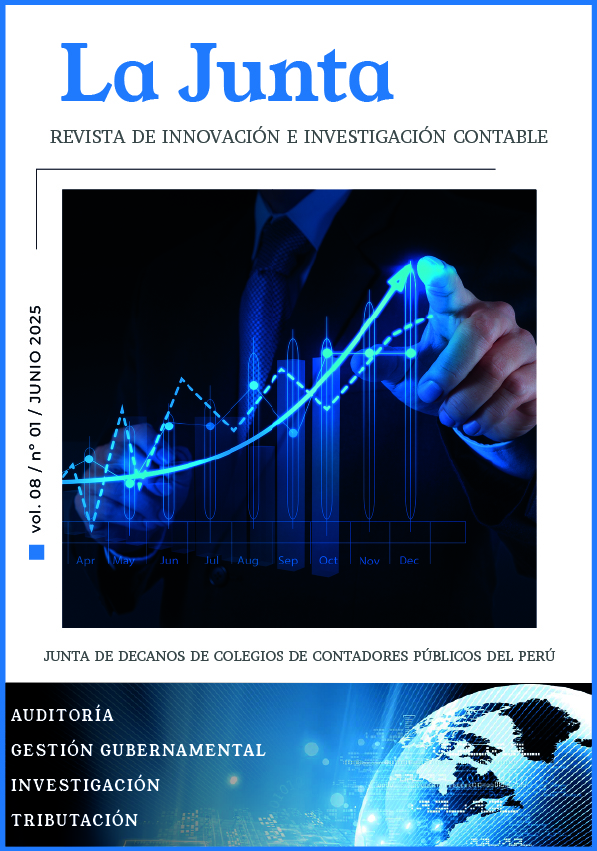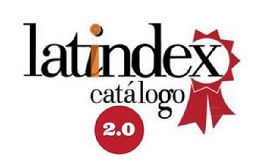Risks and challenges for the taxpayer with the application of big data and artificial intelligence in tax administration
DOI:
https://doi.org/10.53641/000kht63Keywords:
big data, artificial intelligence, risks in tax administration, taxpayersAbstract
The use of big data and artificial Intelligence in tax administration should be guided by principles of transparency, fairness, and privacy protection. These technologies should improve the efficiency and accuracy of tax collection and enforcement, thereby respecting taxpayers' rights and ensuring equitable access to the necessary technological tools. The objective of this study is to describe the risks and challenges faced by taxpayers with the application of big data and artificial intelligence in tax administration. The methodology was based on a thorough review of previous studies and bibliographic material using a selective and critical documentary approach to collect and analyze data from scientific articles on the topic. Critical analysis and information synthesis techniques were used to carefully examine related topics and condense relevant information. The review included a total of 31 relevant scientific articles. The risks identified are loss of privacy and data security, lack of transparency, and technological complexity. The challenges identified are technological adaptation, inequality in the use of technological means, and in the academic preparation of both taxpayers and tax advisors.
Downloads
References
Agustine, F. K., Woodside, J., Mendoza, M., & Valrie, C. (2020). Analyctics, accounting and big data: enhancing accounting education. The Journal of Management and Engineering Integration, 1.
Algazo, F. A., Ibrahim, S., & Yusoff, W. S. (2021). Digital governance emergence and importance. Journal of Information System and Technology Management, 6(24), 18–26.
Alm, J. (2021). Tax evasion, technology, and inequality. Economics of Governance, 22(4), 321–343.
Alva Matteucci, M. (2019, 2 de setiembre). ¿Es posible el uso de big data en materia tributaria? Blog de Mario Alva Matteucci.
Atayah, O. F., & Alshater, M. M. (2021). Audit and tax in the context of emerging technologies: A retrospective analysis, current trends, and future opportunities. The International Journal of Digital Accounting Research, 21.
Azuaje Pirela, M. (2023). Introducción a la ética y el derecho de la Inteligencia Artificial. (1era.Ed.) La Ley Soluciones Legales S.A.
Bellon, M., Dabla-Norris, E., Khalid, S., & Lima, F. (2022). Digitalization to improve tax compliance: Evidence from VAT e-Invoicing in Peru. Journal of Public Economics, 210.
Bento, L. V. (2019). Aplicación de inteligencia artificial y big data en el control de la administración pública y en el combate a la corrupción: la experiencia del gobierno brasileño. Revista General de Derecho Administrativo.
Bozkus Kahyaoglu, S. & Aksoy, T. (2021). Artificial Intelligence in Internal Audit and Risk Assessment. En Financial Ecosystem and Strategy in the Digital Era. Contributions to Finance and Accounting.
Carbajo, D., Fernando, V., Yubero, D., Pablo, J., Víctor, J., Ramos, M., Delfa, P. P., Podestá, A., Porporatto, P., Del, I., Angulo, R., Romano, Á., Zulema, R., Abarca, R., Villalón, V., & Zambrano, R. (2017). Los sistemas tributarios en América Latina.
Casas Roma, J., Nin Guerrero, J., & Julbe López, F. (2019). Big data: análisis de datos en entornos masivos. Editorial UOC.
Comisión Económica para América Latina. (2023). Panorama Fiscal de América Latina y el Caribe, 2023.
Chandra Seethamraju, R., & Hecimovic, A. (2020). Impact of Artificial Intelligence on Auditing - An Exploratory Study. AMCIS 2020 Proceedings.
Chen, Y., Wu, Z., & Yan, H. (2022). A Full Population Auditing Method Based on Machine Learning. Sustainability (Switzerland), 14 (24).
Condori, E. & Aguilar, Y. (2021). La Cultura Tributaria y su Relación con el Cumplimiento de las Obligaciones Tributarias de los Contribuyentes de la Asociación de Comerciantes Unidos Tres de Mayo (ACUTM) de la Ciudad de Puerto Maldonado, 2020. [Tesis de licenciatura, Universidad Nacional Amazónica de Madre de Dios]
Diario Gestión. (2018, 25 de junio). Recuperando la sensación de riesgo. Editorial Diario Gestión.
Diario Gestión. (2023, 10 de julio). Declaración Jurada del IGV será automática: lo que propone la Sunat. Economía.
Erazo Portilla, C. M., Robles Quiñonez, D. G., Cifuentes Quiñonez, L. M., & Saquisari Armijos, D. L. (2021). Auditoría integral en inventarios y costos de ventas en negocios del Cacao Ecuatoriano. Revista de Ciencias Sociales (Ve), 27,3.
Faúndez Ugalde, A., Mellado Silva, R., & Aldunate Lizana, E. (2020). Use of artificial intelligence by tax administrations: An analysis regarding taxpayers’ rights in Latin American countries. Computer Law & Security Review.
Faúndez Ugalde, A., Osman Hein, R., & Pino Moya, M. (2018). The tax audit for electronic systems in opposition to the rights of taxpayers: A comparative study in Latin America. Revista Chilena de Derecho y Tecnología, 7(2), 113–135.
Federico, C., & Thompson, T. (2019). Do IRS computers dream about tax cheats? Artificial Intelligence and Big Data in Tax Enforcement and Compliance. Journal of tax practice & procedure.
González Varona, J. M. (2021). Retos para la Transformación Digital de las PYMES: Competencia Organizacional para la Transformación Digital [Tesis de doctorado, Universidad de Valladoid].
Hendriyetty, N., Evans, C., Kim, C. J., & Taghizadeh-Hesary, F. (2023). Taxation in the digital economy new models in Asia and the pacific. Asian Development Bank Institute & Routledge.
Houser, K. A., & Sanders, D. (2017). The Use of Big Data Analytics by the IRS: Efficient Solutions or the End of Privacy as We Know it? Vanderbilt Journal of Entertainment & Technology Law, 19(4).
Kend, M., & Anh Nguyen, L. (2020). Big Data Analytics and Other Emerging Technologies: The Impact on the Australian Audit and Assurance Profession. Australian Accounting Review.
Lin, Y., Wong, K., Wang, Y., Zhang, R., Dong, B., Qu, H., & Zheng, Q. (2021). TaxThemis: Interactive Mining and Exploration of Suspicious Tax Evasion Groups. IEEE Transactions on Visualization and Computer Graphics, 27(2), 849–859.
Lingyan Zhou. (2019). Opportunities and Challenges of Artificial Intelligence in the Application of Taxation System. Advances in Economics, Business and Management Research.
Lino Ferreira da Silva, M. H., da Silva Rodrigues, A. J., Dantas Bezerra, M. A., Melo dos Santos, G., Libânio de Melo, D., da Silva Alves, J. F., Mendonça Teixeira, M., Ferreira, J., Alves D´Emery, R., & Domingos de Aquino, C. (2018). Tax Audit in the Information Age. IEEE.
López Murphy, J. J., & Zarza, G. (2017). La ingeniería del big data: cómo trabajar con datos. Editorial UOC.
Machiavelli, F. (2012). Government modernization. Diccionario enciclopédico de administración pública. www.dictionnaire.enap.ca
Manita, R., Elommal, N., Baudier, P., & Hikkerova, L. (2020). The digital transformation of external audit and its impact on corporate governance. Technological Forecasting and Social Change, 150, 119751.
Moreno Gonzales, S., & Gómez Requena, J. Á. (2021). Nuevas tecnologías disruptivas y tributación. Editorial Aranzadi.
Naser, A. (2021). Gobernanza digital e interoperabilidad gubernamental. Una guía para su implementación. Comisión Económica para América Latina y el Caribe (CEPAL).
Neuman, E. L., & Sheu, R. J. (2022). Big Data Analytics in IRS Audit Procedures and Its Effects on Tax Compliance: A Moderated Mediation Analysis. Journal of the American Taxation Association.
Novales, A. (2022). Modernización de la Administración Pública. Fedae Policy Paper.
Palma Méndez, J. T., & Morales Roque, M. (2008). Inteligencia artificial: métodos, técnicas y aplicaciones. McGraw-Hill España.
Phong, N. A., Tam, P. H., & Cuong, L. Q. (2022). Forecasting Tax Risk by Machine Learning: Case of Firms in Ho Chi Minh City. Frontiers in Artificial Intelligence and Applications, 358, 66–71.
Rodríguez Pérez, C. I., Licea Jiménez, I. J., Prince, R. M., & Cruz, Y. R. (2023). Elementos teóricos para la relación entre Gobernanza Digital y Estudios Métricos de la Información. ALCANCE Revista Cubana de Información y Comunicación, 12(31).
Simonofski, A., Tombal, T., De Terwangne, C., Willem, P., Frenay, B., & Janssen, M. (2022). Balancing fraud analytics with legal requirements: Governance practices and trade-offs in public administrations. Data & Policy, 4, 14.
Sun, T., & Vasarhelyi, M. A. (2018). Embracing Textual data Analytics in Auditing with Deep Learning. The International Journal of Digital Accounting Research.
SUNAT. (2022). Memoria Institucional 2021.
SUNAT. (2023a). Informe de Gestión por resultados 2022.
SUNAT. (2023b). Memoria Institucional 2022.
SUNAT. (2024a). Informe de Gestión por Resultados SUNAT - 2023.
SUNAT. (2024b). Memoria Institucional 2023.
Suriya Ismail, I., Hanim Shaharuddin, S. N., Husna Shahroni, N. A., Mutmainnah Ibrahim, N., & Mohd Sani, U. R. (2020). The Effect of Trust and Ease of Use of E-filling on Tax Compliance in the Era of Big Data Analytics. IEEE International Conference on E-Business Engineering - ICEBE.
Tiberius, V., & Hirth, S. (2019). Impacts of digitization on auditing: A Delphi study for Germany. Journal of International Accounting, Auditing and Taxation, 37, 100288.
Vera Carrasco, O. (2016). Cómo publicar artículos de revisión o actualización. Revista Cuadernos Hospital de Clínicas, 57(3).
Yakimova, V. (2020). Opportunities and prospects for using digital technologies in auditing. St Petersburg University Journal of Economic Studies, 36(2), 287–318.
Downloads
Published
Issue
Section
License
Copyright (c) 2025 Gustavo Moisés Zárate Poma

This work is licensed under a Creative Commons Attribution 4.0 International License.









